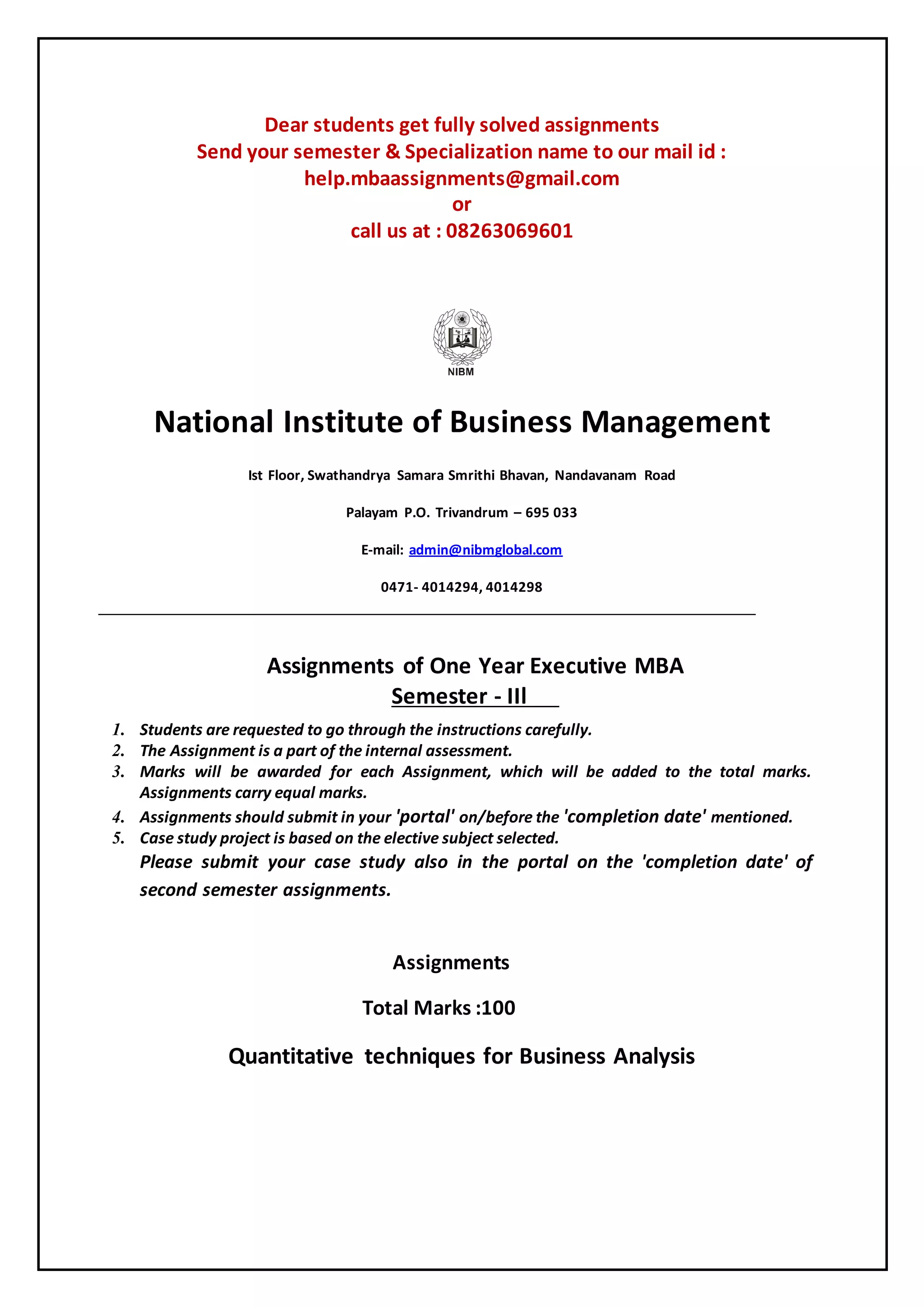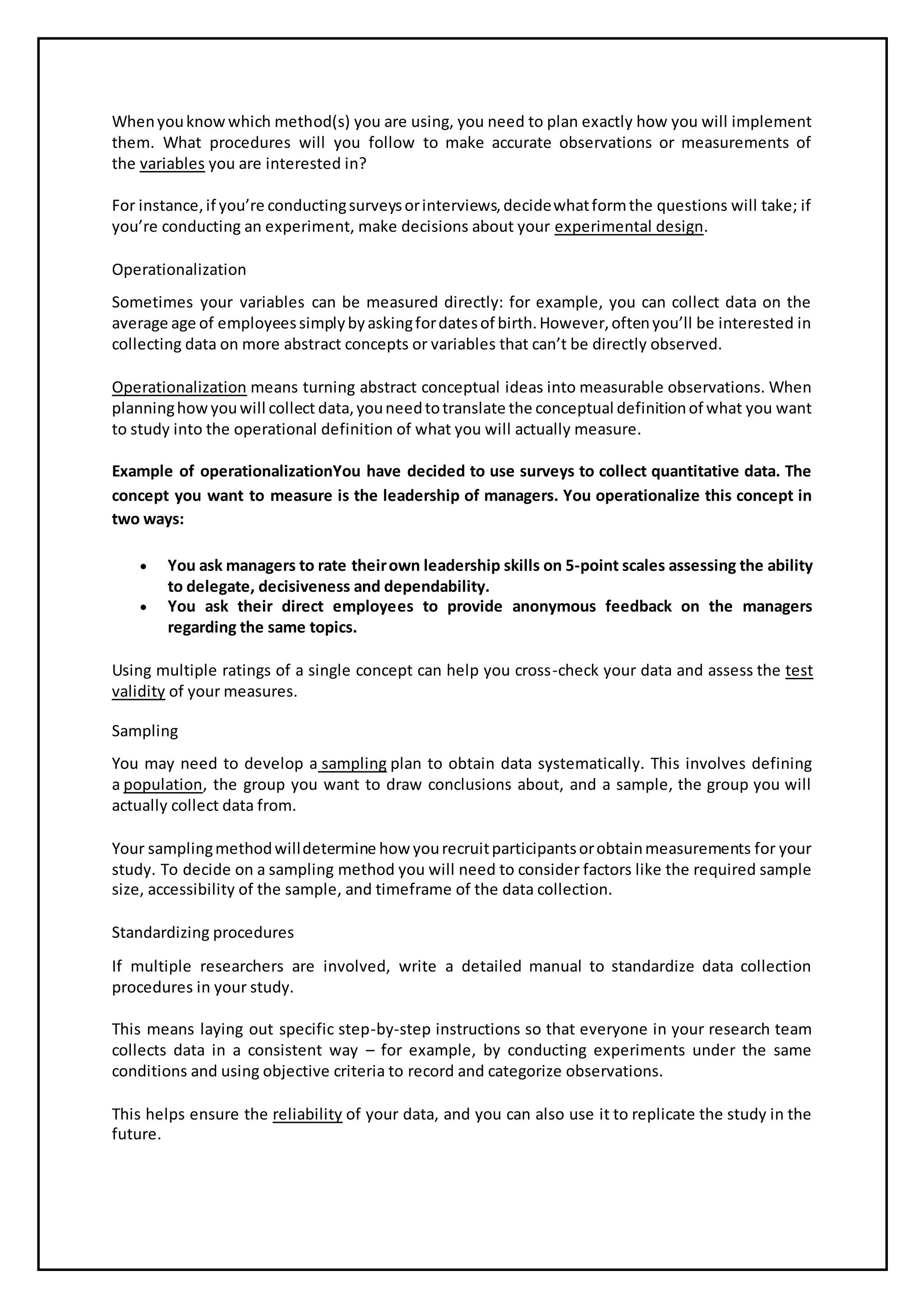The document provides instructions for MBA students regarding the submission of assignments, emphasizing the importance of adhering to deadlines and guidelines as part of their internal assessment. It outlines procedures for data collection within the context of business research, detailing the stages from defining research aims to choosing methods, planning collection procedures, and ensuring data quality. Key steps include operationalization of concepts, sampling plans, and best practices for data management to facilitate reliable research outcomes.




